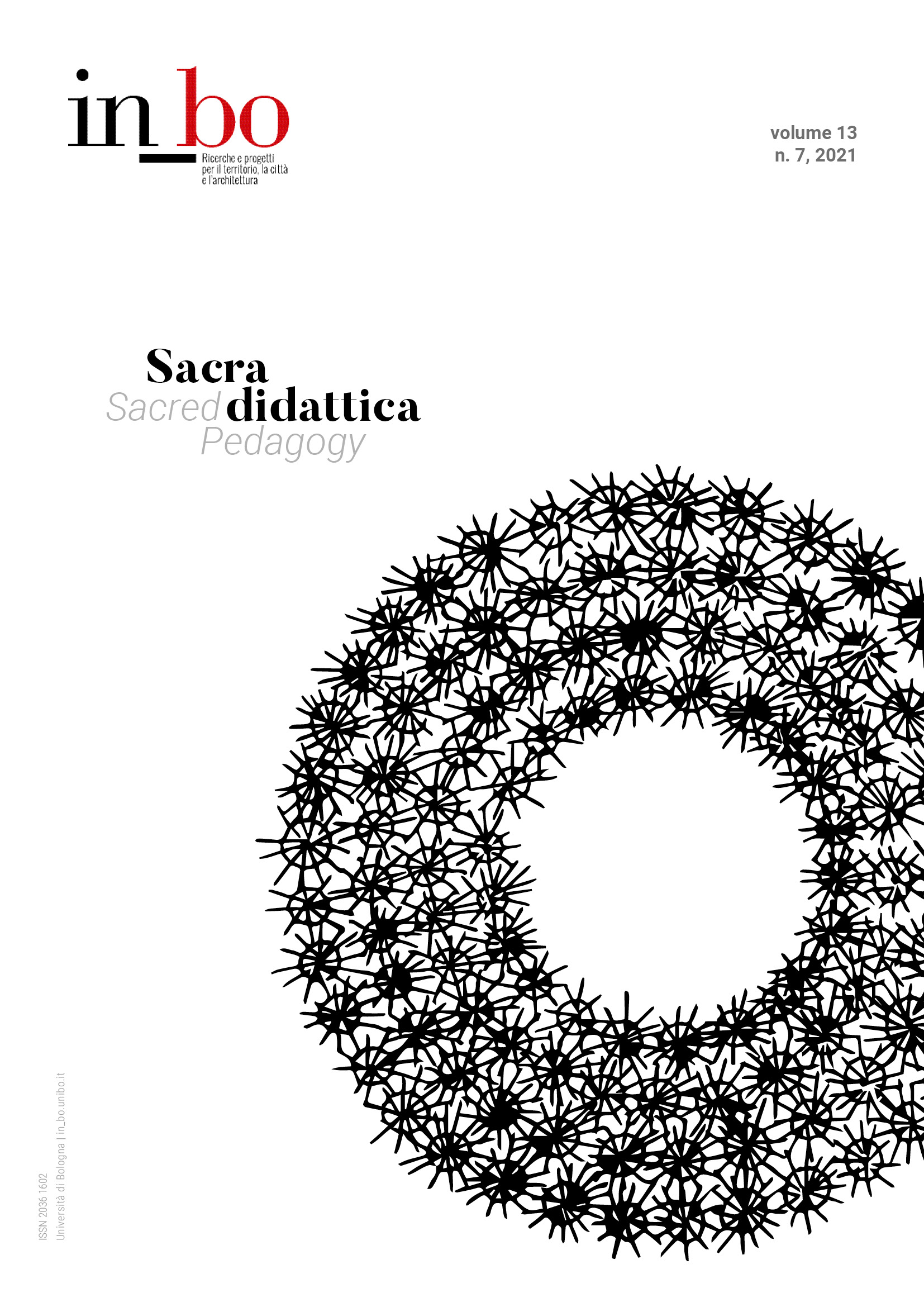Polvese Chapels. The Sense of the Sacred in Nine Offline Places
DOI:
https://doi.org/10.6092/issn.2036-1602/14750Keywords:
Isola Polvese, sacred chapels, genius loci, architectural composition, project educationAbstract
The concept of the sacred can be perhaps broadened by comparing it with its opposite, revealing new meanings. If the term profane etymologically refers to the need to “stand outside the temple” (from the Latin pro-fanus, literally “in front of the temple”) then, on the contrary, the concept of sacred refers to the need to stay within a confined space identified precisely in the “enclosure” (the root of the Latin templum is associated with the Greek term τέμενος, meaning “sacred enclosure”). This interpretation highlights an aspect of sacredness that implicitly recalls elements of architectural composition, such as limitation, form and material, variously declined according to the specific context. That said, can contemporary didactic experience measure itself against the ability to give an aesthetic-compositional response to man’s innate need to relate to the absolute? This is the meaning of “Polvese Chapels” initiative (inspired by the exhibition Vatican Chapels presented at the 16th International Architecture Exhibition in Venice), conceived with the aim of investigating a compositional-design theme, that of the sacred chapel, in relation to a specific naturalistic-environmental context, that of Polvese Island (now a major tourist destination) imagining its transformation into a place for introspective and silent meditation.
Downloads
Published
How to Cite
Issue
Section
License
Copyright (c) 2022 Paolo Belardi, Massimiliano Marianelli, Giovanna Ramaccini, Monica Battistoni, Margherita Maria Ristori, Camilla Sorignani

This work is licensed under a Creative Commons Attribution-NonCommercial 3.0 Unported License.





